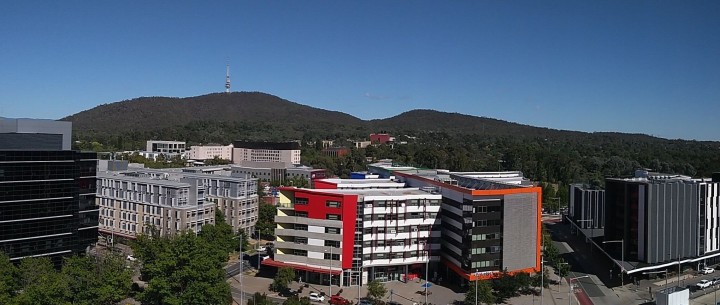My February Changing Seasons post will be divided into two parts. Part 1 covers the serious stuff. Part 2 will be more lighthearted.
February – in the dying days of summer, danger lurks.
The shrill wind blew of the calamity to come.
But no one was listening.

Did you know that the UN declared 2010 to 2020 the Decade for Deserts and has called for urgent action to fight against desertification? The main reasons are land-clearing for agriculture, over-grazing and other land uses (eg. mining), unsustainable land management practices and climate change. In a vicious cycle, degraded lands hold less carbon and less surface moisture. It is estimated that it takes 1000 years to generate 3 cm of topsoil and if the current rate of soil degradation continues, all the world’s topsoil could be gone within 60 years. No topsoil. No life.
In March 2018, the Intergovernmental Science-Policy Platform on Biodiversity and Ecosystem Services released a report on land degradation. It predicted as many as 700 million people could be displaced by 2050 due to the effects of land degradation and climate change.
Like other dry continents, Australia, with its ancient, nutrient poor soils, is vulnerable. In south-eastern Australia where I live, last December and January were our dustiest months on record. We backed this up in February with our “Lawrence of Arabia” moment with yet another massive dust storm. The pollution index reached levels seen in some of the world’s most polluted mega-cities.
Dust has a date with destiny. Not a word was said about the contribution of unsustainable land management practices to the loss of this precious resource.

Compare and contrast the day after.

Gone and forgotten.
This is Part 1 of my response to Su Leslie’s The Changing Seasons monthly photo challenge. Stay tuned for Part 2 where I will return to light programming.
Regards
Tracy
More information:
What If the World’s Soil Runs Out?
https://theconversation.com/on-dangerous-ground-land-degradation-is-turning-soils-into-deserts-94100
https://www.ipbes.net/news/media-release-worsening-worldwide-land-degradation-now-%E2%80%98critical%E2%80%99-undermining-well-being-32
https://www.theguardian.com/environment/2017/sep/12/third-of-earths-soil-acutely-degraded-due-to-agriculture-study
https://www.unccd.int/message-land-and-soil
https://www.theguardian.com/australia-news/2019/feb/13/dust-storms-blanket-nsw-and-act-as-air-quality-reaches-hazardous-levels
https://www.abc.net.au/news/2019-02-13/sydney-dust-haze-prompts-health-warnings/10806014
Information on Australian soils
https://www.aph.gov.au/About_Parliament/Parliamentary_Departments/Parliamentary_Library/Browse_by_Topic/ClimateChangeold/theClimate/desertification
https://www.science.org.au/curious/earth-environment/dirt-our-soils
Click to access soil-discussion-paper.pdf
http://www.abc.net.au/tv/populationpuzzle/environment.html?iframe
I’ve never experienced a severe sand storm. That looks horrendous. There are so many areas with regards to the environment that we need to do better. We just don’t seem to be learning.
LikeLiked by 1 person
And it is not for lack of scientific evidence either. Soil, water, air. Sometimes we forget that we need to take a holistic approach.
LikeLiked by 3 people
Agree, now it is just convincing the politicians and business leaders.
LikeLiked by 1 person
There has never had so much knowledge and been so ignorant. Only cataclysm will work I’m afraid.
LikeLiked by 1 person
The contrast between the “normal” skyline and what you could see during the dust storm is really, frighteningly striking. I wonder how the reality of the environmental catastrophe we face will ever get through when mainstream media seem incapable of joining the dots in their reporting. Sigh.
LikeLiked by 2 people
Well done, very important subject outlined in Part 1….human beings need to wake up, fast!
LikeLiked by 2 people
I wish.
LikeLiked by 1 person
It’s terrifying at what rate landmasses are becoming deserts worldwide. Climate change is real no matter what certain stupid leaders of the world say – I wanted to say ‘think’ but realized that this wouldn’t fit the person I have in mind.
LikeLiked by 2 people
I must be in a blue mood today, Sarah, because I’m not hopeful. Su’s comment about people taking selfies at the gym just sealed it.
LikeLiked by 1 person
I know what you mean, Tracy. It’s difficult to stay positive when surrounded by self-centered people who are only interested in their next Instagram post and photo, or just hearing of it.
LikeLiked by 1 person
Oh, and thanks for all the links, will follow them up soon!
LikeLiked by 1 person
Welcome.
LikeLiked by 1 person
What a resource you’ve given, and so informative, your passion shines through.
LikeLiked by 1 person
Thanks Paul. For some reason I’ve got a good memory for the gloom and doom.
LikeLike